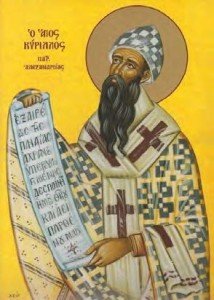I would, for the sake of supporting a truly, greater understanding of our faith and religion, share with my readers the actual text of Chalcedon. While it is long, I do believe it is worthwhile to read it as the Fathers of Chalcedon wrote it. It reads:
Following the Holy fathers, we all with one voice confess our Lord Jesus Christ one and the same Son, the same perfect in Godhead, the same perfect in humanity, truly God and truly man, the same consisting of a reasonable soul and a body, of one substance with the Father as touching the Godhead, the same of one substance with us as touching humanity, like us in all things apart from sin; begotten of the Father before the ages as touching the Godhead, the same in the last days, for us and for our salvation, born from the Virgin Mary, the Theotokos, as touching humanity, one and the same Christ, Son, Lord Only-begotten, to be acknowledged in two natures without confusion, without change, without division, without separation; the distinction of natures being in no way abolished because of the union, but rather the characteristic property of each nature being preserved, and concurring in one person, or hypostasis, not as if Christ were parted or divided into two persons, but one and the same Son and Only-Begotten God, word, Lord, Jesus Christ; even as the prophets from the beginning spoke concerning him, and our Lord Jesus Christ instructed us, and the Creed of the Fathers (i.e., of Nicaea) was handed down to us.
This is our faith. In this famous text, the clearly Cyrillian passages are underlined, and the sentences inspired either by the Antiochenes or Pope Leo are in italics. On the Cyrillian side, particularly noteworthy is the repetition of the words “the same” (ho autos) eight times (excluding the Nestorian “duality” between the Son of God and the son of Mary) and the use of the title Theotokos. On the Antiochene-Latin side is the insistence on the integrity of each nature, each keeping its respective properties within the union. The formula is clearly a committee document, lacking the straightforward, kerygmatic and soteriological fire of earlier Cyrillian statements. But it reflects a “catholic” compromise – we would say today “ecumenical” – concern for possible objections from either side of the debate.
I hope that in sharing this actual text with my readers, that they will be able to come to a deeper understanding of what has gone into the formulation of our beliefs and ideas about Jesus Christ.
I would hasten to also assert that it is our belief that this debate and the formulation of our belief about Jesus was under the influence of the Holy Spirit. The result is beyond mere human invention!

